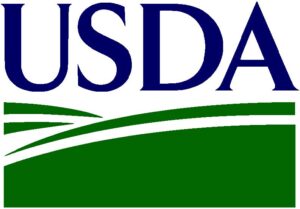WASHINGTON, Jan. 31, 2007 – Agriculture Secretary Mike Johanns today unveiled the U.S. Department of Agriculture’s 2007 farm bill proposals. The more than 65 proposals correspond to the 2002 farm bill titles with additional special focus areas, including specialty crops, beginning farmers and ranchers, and socially disadvantaged producers.
“We listened closely to producers and stakeholders all across the country and took a reform-minded and fiscally responsible approach to making farm policy more equitable, predictable and protected from challenge,” said Johanns. “We started with the 2002 farm bill and propose to improve it by bolstering support for emerging priorities and focusing on a market-oriented approach.”
USDA began preparations for the 2007 farm bill in 2005 by conducting 52 Farm Bill Forums across the country. More than 4,000 comments were recorded or collected during forums and via electronic and standard mail. These comments are summarized in 41 theme papers. USDA economists, led by Dr. Keith Collins, studied the comments and authored five analysis papers.
The proposals unveiled today represent the final phase of a nearly two year process. Each detailed proposal provides information about why a change is needed, the recommended solution, and relevant background information about the impacted program or policy.
Highlights of the proposals include (funding reflects ten year totals):
-Increase conservation funding by $7.8 billion, simplify and consolidate conservation programs, create a new Environmental Quality Incentives Program and a Regional Water Enhancement Program
-Provide $1.6 billion in new funding for renewable energy research, development and production, targeted for cellulosic ethanol, which will support $2.1 billion in guaranteed loans for cellulosic projects and includes $500 million for a bio-energy and bio-based product research initiative
-Target nearly $5 billion in funding to support specialty crop producers by increasing nutrition in food assistance programs, including school meals, through the purchase of fruits and vegetables, funding specialty crop research, fighting trade barriers and expanding export markets
-Provide $250 million to increase direct payments for beginning farmers and ranchers, reserve a percentage of conservation funds and provide more loan flexibility for down payment, land purchasing and farm operating loans
-Support socially disadvantaged farmers and ranchers by reserving a percentage of conservation assistance funds and providing more access to loans for down payments, land purchasing and farm operating
-Strengthen disaster relief by establishing a revenue-based counter-cyclical program, providing gap coverage in crop insurance, linking crop insurance participation to farm program participation, and creating a new emergency landscape restoration program
-Simplify and consolidate rural development programs while providing $1.6 billion in loans to rehabilitate all current Rural Critical Access Hospitals and $500 million in grants and loans for rural communities to decrease the backlog of rural infrastructure projects
-Dedicate nearly $400 million to trade efforts to expand exports, fight trade barriers, and increase involvement in world trade standard-setting bodies
-Simplify, modernize, and rename the Food Stamp Program to improve access for the working poor, better meet the needs of recipients and States, and strengthen program integrity
The Administration’s 2007 farm bill proposals would spend approximately $10 billion less than the 2002 farm bill spent over the past five years (excluding ad-hoc disaster assistance), upholding the President’s plan to eliminate the deficit in five years. These proposals would provide approximately $5 billion more than the projected spending if the 2002 farm bill were extended.
The proposals are available at www.usda.gov/farmbill. Also posted on USDA’s website are the Farm Bill Forum transcripts, farm bill comments submitted by the public, theme papers summarizing the comments and USDA analysis papers.






